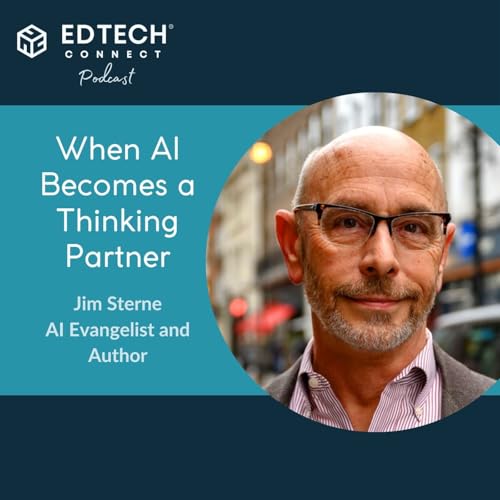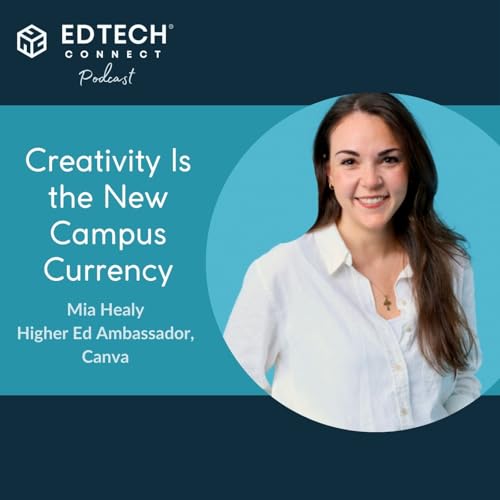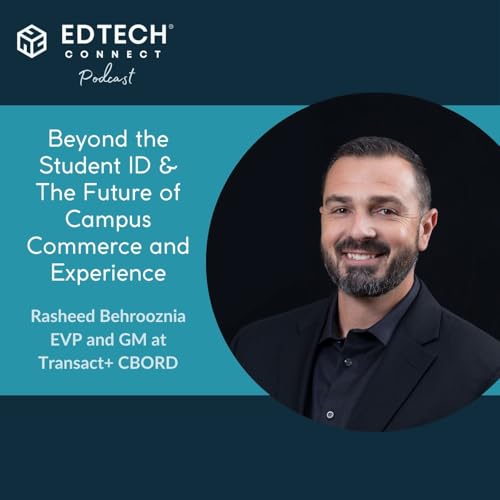Why is coordinating family dinner surprisingly similar to managing complex university processes? In this episode of Edtech Connect, host Jeff Dillon sits down with Ricardo Rengifo, President and CEO of DBS Software and Services, a pioneer in digitizing campus operations.
Ricardo pulls back the curtain on the "document chaos" that plagues so many institutions—the siloed systems, fillable PDFs, and endless email chains—and reveals the path to a streamlined, paperless future. They discuss how smart forms and e-signatures transform user experience, why the biggest ROI often comes from overlooked operational areas like HR and facilities, and how to overcome the twin roadblocks of fear and perceived lack of IT resources.
For any campus leader drowning in paperwork or looking to launch a digital transformation, this conversation is a practical guide to eliminating friction, boosting efficiency, and finally creating that single, seamless digital experience for students and staff.
Key Takeaways
- Start with the Painful, Overlooked Processes: Don't try to boil the ocean. The biggest ROI for digital transformation often comes not from student-facing applications, but from internal operational areas like HR, facilities, and faculty contracting, where cumbersome, paper-based processes create significant hidden costs and inefficiencies.
- "Smart Forms" are a Game Changer, Not Just Digital Paper: Moving from a fillable PDF (a "dumb" container) to an interactive smart form transforms the user experience. Smart forms guide users with logic and validation, reduce errors, and automatically kick off workflows, moving information seamlessly from user to stakeholder.
- A Partnership Model is Key to Successful Change Management: Successful implementation isn't just about installing software; it's about partnership. By starting with a few key use cases to prove value, building internal champions, and providing "concierge-level" support, schools can socialize success and drive organic adoption across departments.
- The Right Tool for the Job Saves Money: Many schools use the wrong tools for their needs, such as trying to model complex workflows in e-signature platforms like DocuSign, which causes costs to skyrocket. A dedicated forms and workflow solution can handle signatures at a much lower total cost.
- The Future is Intelligent and Accessible Automation: The next wave of innovation is moving beyond simple digitization to intelligent automation. Integrating AI (like using ChatGPT to generate code for form logic) empowers non-technical staff to create complex, rich digital experiences without needing to be programmers.
Sign up for the Webinar and find out how to transform your college and save money:
https://us06web.zoom.us/webinar/register/1617603826973/WN_JUrajEQBT0mys3qU5Ibk_w
Find Ricardo Rengifohere:
LinkedIn
https://www.linkedin.com/in/rrengifo/
DBS Software and Services
https://www.dbsgroup.net/
Sign up for the November 19th webinar here:
Web: https://edtechconnect.com/
Chapters - (00:00:00) - PODCAST: Ricardo Renjifo
- (00:01:34) - If You Could Automate Any Everyday Task, What Would You Do
- (00:02:23) - EdTech Connect: Finding efficiencies in higher ed
- (00:03:46) - The Before and After of a Campus IT Transformation
- (00:04:59) - What are the biggest roadblocks to fully going fully digital?
- (00:05:59) - How Do Smart Forms Change the Game for Colleges and Universities?
- (00:10:44) - Breaking Down the Silos
- (00:11:30) - How to Manage the Change Process for the Platform
- (00:12:54) - Real-World Success Stories
- (00:15:05) - What is Software as a Service (SaaS) for institutions
- (00:16:11) - Are Small Schools More Successful?
- (00:16:48) - E-Forms: The Future of Workflow Automation
- (00:19:25) - What's the One Actionable Step for Digital Transformation on Campus?
- (00:20:49) - EdTech Connect
 31 mins
31 mins 28 mins
28 mins Dec 12 202529 mins
Dec 12 202529 mins 29 mins
29 mins Nov 28 202533 mins
Nov 28 202533 mins 25 mins
25 mins Nov 14 202530 mins
Nov 14 202530 mins 22 mins
22 mins
